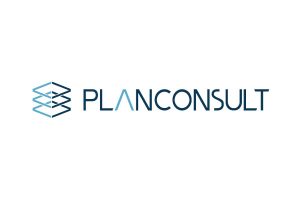
5 Ways Sell-Side Customer Diligence Can Maximize Sale Prices
[{“row_order”:”0″,”cols”:[{“column_order”:”0″,”grid_class”:”col-full first last”,”modules”:[{“mod_name”:”text”,”mod_settings”:{“content_text”:”
Over the past few years, acquirers have come to understand that rigorous, third-party customer diligence is essential to validate their investment hypotheses and determine the long-term growth potential of a company.
In today’s environment of long holding periods and record-high multiples, sellers are coming to the same conclusion. The use of third-party sell-side customer diligence has been increasing as sellers are under rising pressure from discerning buyers to justify purchase prices.
Based on our experience conducting these types of engagements, we find there are five main ways pre-sale diligence can help sellers maximize and justify sale prices.
1.Determine if the time is right for a sale
Whether or not customer feedback is positive, neutral, or negative, there is value to be gained in sell-side diligence. If feedback is positive, it can be used to reinforce the decision to sell, as well as confirm the timing for the sale is optimal. If neutral or negative, the feedback can be used to implement changes which can improve customer satisfaction and loyalty, thus better positioning the company for a sale.
2.Attract and persuade buyers
Odds are your confidential information memorandum (CIM) will paint an optimistic picture. In the CIM, you’ll talk about how strong customer relationships are, how you’ve grown market share, how you’ve positioned the company to be more competitive, etc. And this may all be true, but if a buyer is going to pay 10X+ EBITDA, they are going to need more validation of these claims than the handful of customer testimonials which are typically included in a CIM. In addition to examining historical and pro forma financials, buyers also want thorough documentation about the health of customer relationships.
3.Control the message
Upon receiving a CIM, buyers immediately get to work validating its claims. By preempting the process of customer validation, the seller can minimize customer disruption by limiting the number of parties that are contacting them to one — the seller. This is crucial if the seller wishes to announce the deal post-close, as inquiries from multiple organizations are likely to tip customers off to a pending deal. Furthermore, preempting the process levels the playing field since all prospective buyers will be working from the same set of seller-generated information. By conducting pre-sale diligence (versus each suitor conducting their own investigation), the seller has access to the results and is able to provide additional context allowing for more accurate interpretations of the findings
4. Prove there is runway for future growth
The price buyers pay for a company is pegged to what they think the company will be worth in the future, not necessarily what they think it is worth today. Pre-sale diligence can be used to substantiate value creation strategies by answering questions such as: Can we grow share of wallet? Can we attract new customers? Are there opportunities to innovate? If there is an innovation pipeline, can we demonstrate interest in new product or service enhancements? How can we position ourselves to become more competitive? What does the future of the category look like, and how can we proactively respond?
5. Accelerate the timeline
Odds are if the seller doesn’t conduct customer diligence, the buyer will once a letter of intent has been signed. Checking the customer diligence box pre-sale can expedite the closing date and eliminate the risk of the deal falling through during the exclusivity window.
Sell-side customer diligence is part of the standard operating procedure in Europe, and savvy American firms are starting to incorporate this methodology as well. With this approach, the buyer gets an objective assessment of customer relationships which can be used to mitigate risks and inform post-close playbooks. Meanwhile, the seller gets to control the process while using the findings to justify their asking price — a win-win for all involved.
Fonte: www.axial.net – 22/03/18
“,”column_divider_style”:”solid”,”checkbox_padding_apply_all”:”padding”,”checkbox_margin_apply_all”:”margin”,”border_top_style”:”solid”,”border_right_style”:”solid”,”border_bottom_style”:”solid”,”border_left_style”:”solid”,”checkbox_border_apply_all”:”border”}}],”styling”:[]}],”styling”:[]},{“row_order”:”1″,”cols”:[{“column_order”:”0″,”grid_class”:”col-full first last”,”modules”:[],”styling”:[]}],”styling”:[]}]



